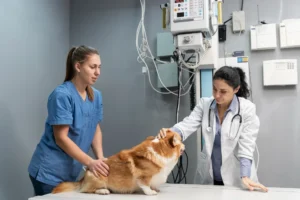Caring for a Baby Born with Gastroshiza: A Parent’s Guide
When your baby is diagnosed with gastroshiza, it’s natural to feel overwhelmed and uncertain about what lies ahead. This congenital condition, where the intestines develop outside the baby’s body through an opening near the belly button, requires immediate medical attention and surgery after birth. While the journey can be challenging, many babies with gastroshiza go on to live healthy lives with proper care.
This guide is designed to help parents understand what to expect and how to provide the best possible care for their child.
Understanding Gastroshiza
Gastroshiza is an abdominal wall defect that occurs during fetal development. Unlike some other conditions, the intestines are not covered by a protective sac, leaving them exposed to amniotic fluid during pregnancy. This exposure can cause swelling or irritation, but with timely treatment, babies recover well.
Most cases are detected during a routine ultrasound, giving doctors and parents time to prepare for delivery and immediate care after birth.
What to Expect After Delivery
Immediate Care at Birth
Babies with gastroshiza need specialized care as soon as they are born. The exposed intestines are covered with a sterile material to protect them until surgery is performed. Parents may not be able to hold their baby right away, as the newborn is usually taken to a neonatal intensive care unit (NICU) for stabilization.
Surgery and Repair
Surgical repair is essential. Depending on the size of the defect and the baby’s overall health, doctors may choose one of two methods:
- Primary repair: The intestines are placed back inside the abdomen and the opening is closed in a single surgery.
- Staged repair: If the intestines are swollen or the opening is too small, the organs are placed in a protective “silo” bag and gradually returned to the abdomen over several days before closure.
Both approaches are effective, and the decision depends on the baby’s individual condition.
Life in the NICU
Feeding and Nutrition
In the first days after surgery, babies may not be able to feed normally. Instead, they receive nutrition through an IV line. Gradually, feeding with breast milk or formula begins as the intestines heal and start functioning.
Monitoring and Support
The NICU team carefully tracks breathing, temperature, and infection risks. Parents are encouraged to participate in care whenever possible, such as providing comfort through touch or speaking softly to their baby.
Length of Stay
The recovery period varies. Some babies are ready to go home within a few weeks, while others may need longer support depending on how quickly their intestines adapt.
Bringing Your Baby Home
Leaving the hospital is a huge milestone, but caring for a baby who has undergone gastroshiza repair requires special attention.
Feeding at Home
- Babies may need frequent, smaller feeds as their digestive system adjusts.
- Breast milk is often recommended because it is easier to digest and boosts immunity.
- Some babies may require special formulas if feeding issues persist.
Watching for Complications
Parents should monitor for signs of infection or digestive problems, including:
- Fever or unusual irritability
- Vomiting or refusal to feed
- Swelling or redness around the surgical site
Prompt medical attention is essential if any of these signs appear.
Regular Checkups
Follow-up appointments are critical to track growth and development. Pediatric surgeons and specialists will ensure the intestines are functioning properly and the abdominal wall is healing well.
Supporting Your Baby’s Development
Most children who undergo gastroshiza repair grow and develop normally, but some may face temporary challenges.
Growth and Weight Gain
Some babies may grow more slowly in the first months, but most catch up with time. Regular monitoring helps identify if nutritional support is needed.
Motor Skills and Activities
Physical therapy may be recommended if recovery delays physical milestones such as rolling, sitting, or crawling. Early intervention makes a big difference.
Long-Term Outlook
The majority of children born with gastroshiza lead healthy, active lives. Occasional digestive sensitivities may occur, but most resolve as the child grows.
Emotional Support for Parents
Caring for a baby with gastroshiza can be emotionally demanding. Parents often feel anxious, guilty, or overwhelmed. It’s important to acknowledge these feelings and seek support.
Coping Strategies
- Stay informed: Understanding your baby’s condition helps reduce fear.
- Lean on support systems: Family, friends, and parent support groups can provide encouragement.
- Self-care matters: Eating well, resting, and caring for your own mental health allows you to better care for your baby.
Connecting with Other Families
Many parents find comfort in talking to others who have gone through the same experience. Hospitals and online communities often provide opportunities to connect and share stories
Preparing for the Future
School and Social Life
Most children with gastroshiza do not face restrictions in school or daily activities. Teachers should be aware of the child’s medical history, especially if surgeries left visible scars, to ensure a supportive environment.
Sports and Physical Activity
After full recovery, children can usually participate in sports and physical play like their peers. Any restrictions will depend on individual medical advice.
Medical Follow-Ups
Long-term follow-ups may continue into childhood to monitor digestive health and abdominal strength, but many children eventually require little or no ongoing medical care.
Key Takeaways for Parents
- Gastroshiza requires immediate surgical repair after birth, but survival and recovery rates are very high.
- Babies may face short-term feeding and digestive challenges but usually adapt with time.
- Regular medical checkups and close monitoring are essential in the first months after surgery.
- Parents play a vital role in providing emotional comfort, proper nutrition, and developmental support.
- With love, patience, and the right medical guidance, most children born with gastroshiza grow up to live normal, healthy lives.
Final Thoughts
Caring for a baby with gastroshiza is undoubtedly a journey filled with challenges, but it is also a journey of resilience and hope. Advances in neonatal surgery and intensive care have dramatically improved outcomes, giving parents reason to remain optimistic.
By staying informed, seeking support, and working closely with medical professionals, parents can confidently navigate each step of their baby’s recovery. With time, many families find that gastroshiza is just one chapter in their child’s story—one that does not define their future.

Deepak Sharma
Namaste! I’m Deepak Sharma, the creative mind behind SocialFunda, your go-to hub for Facebook bios, captivating captions, Instagram bios, and a treasure trove of Hindi Shayari. As a digital enthusiast, I am passionate about curating content that adds a touch of flair to your online presence.







